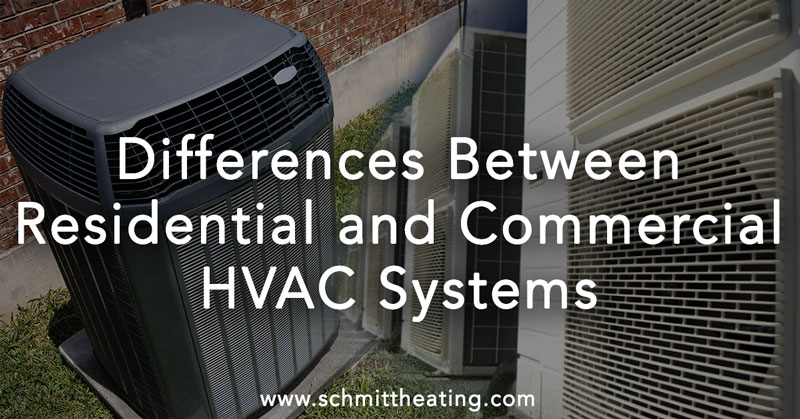Differences between Commercial and Residential HVAC Systems
Heating and cooling technology can be customized to fit any environment, no matter how large or small. Within this wider range of possibilities there are two separate, distinct categories of HVAC technology: commercial and residential systems.
The principles behind each system are the same, but each has some general characteristics that distinguish it from the other.
Comparing and Contrasting
There are five points of difference between commercial and residential HVAC systems:
#1 Structure
Commercial HVAC technology is manufactured to meet the heating and cooling needs of large—and occasionally gigantic—indoor spaces. But amazingly all of that power comes from one self-contained piece of equipment called a prepackaged unit. Every specific section of a commercial system is housed inside a single cabinet, including the condenser, compressor, condenser fan, blower, evaporator and the condensation drainage components.
Residential systems, on the other hand, are decentralized and split between two sections: one on the exterior of the home (usually in the back) that contains the condenser and the compressor and another indoors (often in a closet or in the basement) that houses the blower, evaporator and drainage system.
#2 Location
Residential HVAC systems are divided between inside and outside and generally installed at ground level. But commercial systems are typically located on the roof of the establishments they are expected to service. The heated or cooled air they produce is piped inside and distributed through a network of ducts, with zone dampers included to regulate air flow.
Commercial HVAC equipment is installed on rooftops for three reasons: to eliminate noise pollution, to save valuable business/commercial floor space and to prevent repair and maintenance actions from interfering with normal business operations.
#3 Drainage
With residential systems the process is straightforward. Moisture is collected in a single drainage pan and piped for release outside. There’s usually little fuss and little muss.
But commercial drainage systems have to handle a greater quantity of condensation and cannot simply release it onto rooftops. Consequently commercial drainage systems are more complex and must include drain piping arrangements adequate to the task at hand.
#4 Exhaust Ventilation
Releasing exhaust is a relatively simple affair with residential HVAC technology, but it is a more complex undertaking in commercial systems. The former can make use of windows and direct access to the outdoors while that latter must utilize additional components to handle the load efficiently.
#5 Flexibility
Commercial HVAC systems are modular in design, meaning their heating or cooling power can be increased or decreased at any time through the addition or subtraction of unit supplements.
This is in sharp contrast to residential systems, which come with a predetermined heating and cooling potential that cannot be altered. For this reason it is vitally important that homeowners and landlords choose properly-sized air conditioners, heat pumps and/or furnaces right from the get-go.
Commercial or Residential, the Experts are Always There to Help
Regardless of the type of HVAC system you need, professional installers can help you make smart and logical decisions that will guarantee reliable heating and cooling performance. They can also provide you with essential repair and maintenance services as needed.
Be sure to follow us for more invaluable insights on the ever-evolving technology of residential and commercial HVAC systems.










Leave a Reply
Want to join the discussion?Feel free to contribute!